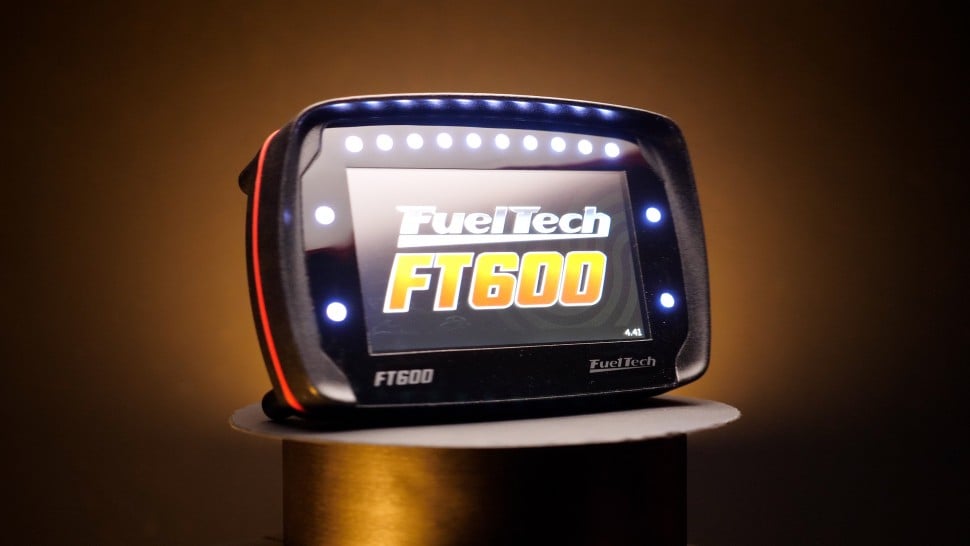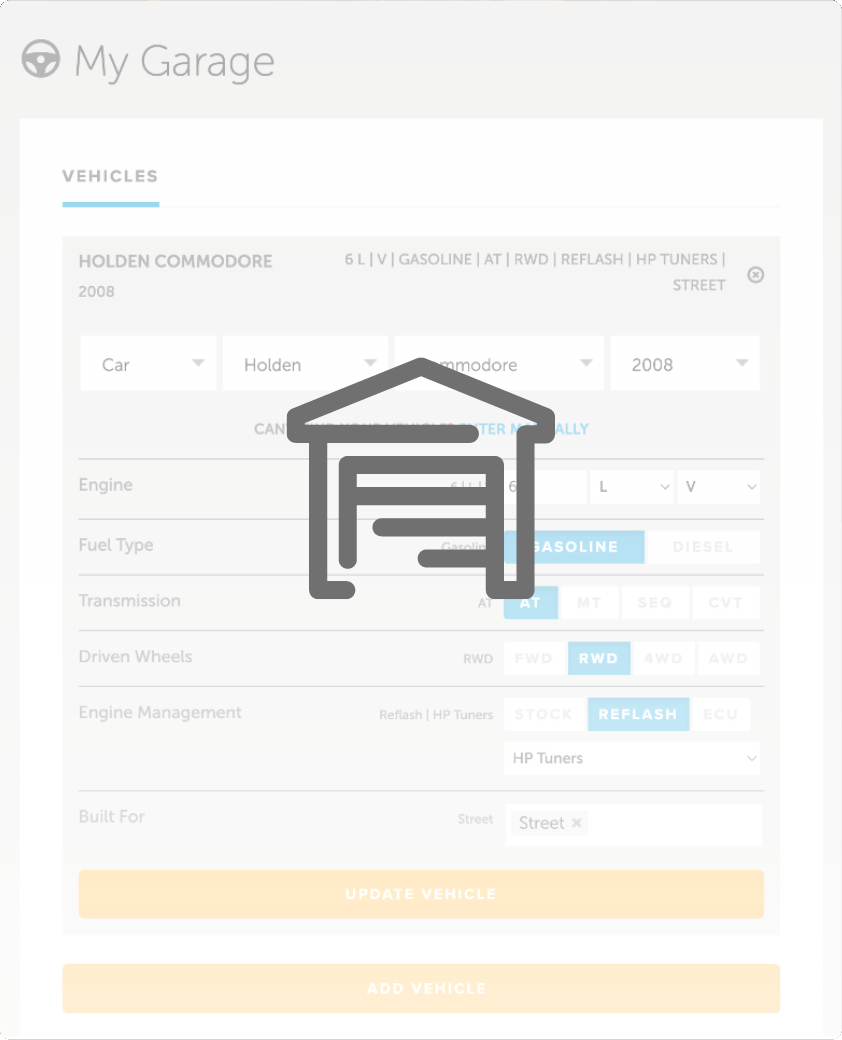| 00:00 |
For the last step of our process we've got the car off the dyno now and we're here at Highlands Motorsport Park, and essentially what we're going to do is replicate what we saw on the dyno, essentially make sure that everything we saw on the dyno stacks up under real world conditions.
|
| 00:14 |
Obviously, we don't drive and race our cars on dyno so what really matters is how good the quality of the tune is under real world conditions.
|
| 00:23 |
And you might be wondering to yourself well why would the tune be different compared to what we saw on the dyno and that is a valid concern.
|
| 00:30 |
The reality, however, is that even with a really well developed dyno cell it's difficult if not impossible to replicate the air flow and hence temperatures that we're going to see under real world conditions.
|
| 00:42 |
So, that's why I always where possible will confirm the tune under real world road driving conditions.
|
| 00:49 |
You can do this equally on the road or the racetrack, obvious benefits with the racetrack in terms of safety in that we're not worrying about oncoming cars, pedestrians, traffic lights, etc.
|
| 01:00 |
However, the beauty of reflashing is that while we're out on track, we really don't need to be concentrating on the laptop, we're going to go through some very specific testing procedures and we're going to be simply data logging using our VCM scanner.
|
| 01:14 |
Then we can come back to the safety of the pits or if you're on the road, pull off to the safety of the side of the road and then you can analyse your data and go ahead and make changes as you see fit.
|
| 01:25 |
So, what we're going to do is essentially break this testing into two separate parts.
|
| 01:29 |
First of all, we're going to go out on track, we'll allow the car to sort of just allow all of the heat soak to dissipate, so probably complete a lap or so just under normal speed conditions before we start our logging and again just as I've talked about during the rest of the worked example, this just ensures that we're actually gathering good quality data that's not influenced by heat soak or unrealistic engine coolant temperatures.
|
| 01:52 |
From there we're going to go ahead and gather some data under part throttle steady state conditions.
|
| 01:58 |
So, essentially here I'm going to try and gather as much data as I can under closed loop control and fill out those graphs that we've already looked at while we're on the dyno.
|
| 02:07 |
And what I'm looking for here is just to see how close our fuel trims are to zero, remembering our target is plus or minus five is really about as much as I'd like to see ideally we'd like to be maybe plus or minus 2-3%.
|
| 02:20 |
Once we've gathered that data, we're going to come back to the pits and we'll have a look at the log data and see what if any changes are required.
|
| 02:28 |
Once we've done that we'll go back out on the track and we'll find a long section of straight track and we'll do a full power acceleration run and that's essentially going to be replicating our ramp runs on the dyno.
|
| 02:40 |
And again we're just going to be looking for any knock activity and we're going to be looking to see if our air fuel ratio matches its target.
|
| 02:47 |
So, now that we know what we're going to do, let's head out onto the racetrack.
|
| 02:52 |
Alright, so we've got our intake air temperature down into the 20°C vicinity.
|
| 02:58 |
It's a little bit warmer than what it was on the dyno but that's sufficient in realistic numbers so we'll start our logging here and what we're going to do is complete around about a lap and I'm in manual mode here with our eight speed auto and the reason that I'm doing this or running in manual mode is just so I've got a little bit more control over the range of RPM and load that I can use.
|
| 03:22 |
So, we can vary both the gear and our throttle position in order to gather as much data as we can.
|
| 03:27 |
So, we're going to go ahead now, speed this up a little bit and just complete as much of our logging as we can in order to fill out those graphs and get a real sense of what our fuel trims are doing.
|
| 03:52 |
Alright, at this stage I feel like we've got enough data to be able to analyse and see what our fuel trims are actually doing so we'll just stop our logger here and we'll go back into drive and just while I'm heading back to the pits, there's a couple of things that we want to be mindful of while we are gathering this data and that's the way we're driving the car.
|
| 04:11 |
We want to make sure that we're being as smooth as possible on the throttle, so that we're not bringing in any acceleration enrichment.
|
| 04:20 |
So, it's really important to be as smooth as we can.
|
| 04:23 |
Of course, we can filter out some of these elements inside of our graphs if we want, but the better the quality of the data that we achieve, the easier our job's going to be.
|
| 04:32 |
Also as with a lot of the work that we do with reflashing, can be an iterative process.
|
| 04:38 |
So, you may find that you need to perform a couple of logs in order to actually get the sort of quality data that you want.
|
| 04:47 |
Remembering we can always check in our graphs and see the count number that we've got in the cells, making sure that we've actually got enough data to actually be confident in.
|
| 04:57 |
Alright, let's head back to the pits now and we'll have a look at the data that we've got.
|
| 05:01 |
Alright, so let's have a look at our data now and first of all let's look at our chart versus time and remembering of course just like normal we've got our short term and long term fuel trims down at the bottom.
|
| 05:11 |
And even just by casually looking through our timeline here, we can see that essentially everything's looking really really good.
|
| 05:19 |
For the most part, all of our trims are sitting quite nicely close to zero , which is definitely a far cry from what we had when the vehicle was stock.
|
| 05:29 |
Now, there's always going to be outliers like this but that's why we use our graphs instead of our timeline in order to actually analyse this.
|
| 05:38 |
So, let's pull our graphs back over to the left so we can make use of those.
|
| 05:43 |
And at this point because we are in closed loop mode, we want to be using the first set of graphs just like we did on the dyno.
|
| 05:50 |
So, let's click here and have a look and again we're looking for our plus or minus 5% and we do have a few outliers here in the positive 10%, but I'm not going to take too much notice of these because if we look at our counts again, we're sort of getting counts of six, two, it's just not sufficient.
|
| 06:11 |
So, this is really in the overrun area where we're in D cell fuel cut.
|
| 06:15 |
So, if we go back to our average, the data that I'm interested in here is really the centre of this graph , which is all looking pretty close within our bounds, certainly within our plus or minus 5%, let's just continue looking through here.
|
| 06:28 |
And again with the exception of some outliers , which again if we look at our count here, four, I'm definitely not going to be taking any notice of that.
|
| 06:37 |
Continue through, again the data in overrun here is going to be difficult to trust because of our D cell fuel cut as well.
|
| 06:45 |
We'll go to our last couple here and yeah essentially everything is for the most part right on our track of what we want and again certainly much much better than what we had when the vehicle was stock.
|
| 06:59 |
So, obviously if we see any significant variations here, it's a process of going back through our neural network training, but in this case everything's close enough to the mark that I don't feel the need to make any changes here on track.
|
| 07:12 |
The other thing we can also have a look at is our advance and this just shows us the actual timing that's been delivered.
|
| 07:19 |
As well of where we were accessing while we're out on track.
|
| 07:23 |
And you can see basically I've sort of been in the 1500 to 3000 RPM range.
|
| 07:28 |
Now, of course yes we can go higher, but the reality is that this is the area that we're going to be spending the majority of our time in when we're actually cruising.
|
| 07:36 |
Generally, even if we're on a racetrack, we're going to be in the wide open throttle area where we're most interested in actually making sure everything's right and that's the area that I've just highlighted here.
|
| 07:48 |
So, we can click on our retard tab and see if we've got any retard because remember we did sharpen up that timing in that part throttle area and we do not have any ignition retard active there, so can be pretty confident that everything's on track and doing exactly what we want , which is always refreshing.
|
| 08:05 |
Next, step of the process, we're going to head back out on track now.
|
| 08:09 |
Again, I'm going to let all of that heat soak dissipate and we're going to do a wide open throttle acceleration run down the longest section of the racetrack.
|
| 08:17 |
So, I'm going to try and do this in maybe fourth gear.
|
| 08:21 |
Obviously it's a bit of a balancing act here between traction, terminal speed in the higher gears, but also we want to use a gear that's high enough that we're actually going to get a genuine amount of load on the engine and have a run that's long enough to get some really good data.
|
| 08:37 |
If we did it in second gear for example, we're only going to have an acceleration run of maybe a couple of seconds and that's not really enough.
|
| 08:43 |
So, we'll try fourth gear and see if that's workable.
|
| 08:45 |
So, let's head back out on track now.
|
| 08:48 |
Alright, we've got rid of our heat soak now, we've got back to normal operating temperatures and we're just coming up to the entrance to the front straight and that's where we're going to perform our full throttle acceleration.
|
| 08:59 |
So, we've got our logger already up and running here and we'll just get ourselves into fourth gear as we come through this last corner leading onto the front straight.
|
| 09:09 |
And what I want to do is really replicate the RPM range that I had on the dyno.
|
| 09:15 |
So, we're going to start from around about 1500 RPM and we'll accelerate all the way through hopefully to about 5800 RPM, basically the rev limiter.
|
| 09:24 |
So, let's go ahead now and gather that data.
|
| 09:43 |
Alright, so our acceleration run's complete there and we can head back to the pits and have a look at our data and see what changes, if any, need to be made.
|
| 09:52 |
Ok so, we're back in the pits so let's have a look at our data and this is the area of our ramp run here or acceleration run.
|
| 10:00 |
What we can see is that interestingly we do have an area here at the start of that run, right up to higher RPM where we are actually a little bit richer than our target, so if we sort of click at this point we can see that we've got a measured air fuel ratio of 12.2 to one versus our target of 12.5 to one.
|
| 10:17 |
So, there is actually a little bit of work to do there.
|
| 10:20 |
We'll analyse that in a little bit more detail in a second.
|
| 10:22 |
Another aspect of this , which is obviously important to monitor is our knock retard.
|
| 10:27 |
And we can see that we do have this one little area where we've taken half a degree up.
|
| 10:33 |
Now, I'm not overly worried about that, as I said while we were on the dyno, I'd only really worry about this if it was repeatable.
|
| 10:40 |
So, if I went out and did another run and actually even with half a degree, I probably wouldn't necessarily change my timing.
|
| 10:47 |
Once we get sort of one degree and above, if it's repeatable at that point, I'd definitely change my spark table.
|
| 10:52 |
So, at this point it looks like the timing is ok, however this lower range of our air fuel ratio, probably from about 4500 RPM down to where we first sort of got into the throttle at 2700, we are a little bit rich.
|
| 11:09 |
Top end looks really really good up here, right on our target, essentially 12.6.
|
| 11:14 |
So, that's really good.
|
| 11:16 |
So, let's have a quick look at our graphs and again this time we're going to be using our power enrichment table.
|
| 11:23 |
So, we can see essentially where we were running and this is the area that we were mostly running in on our 117 degree cam angle for our exhaust.
|
| 11:33 |
And that's really the majority of our wide open throttle.
|
| 11:37 |
So, what we can see here is that we're not too bad but sort of 4% at the start, dropping away to sort of 2.5, 3%.
|
| 11:46 |
And then right on the top end we've got a little bit of a blip there as well.
|
| 11:50 |
Now, I'm not going to go through the process here, because this is just a rinse and repeat of what we did on the dyno for training the neural network.
|
| 11:57 |
But essentially with an error under wide open throttle, while I'm always going to be happier that my error is erring on the side of being richer rather than leaner, when I've got a 4% error there under wide open throttle, that's something that I definitely would clean up.
|
| 12:12 |
I'd like to see my wide open throttle mixtures probably closer to sort of plus or minus 1% and again I'll be tending towards targeting slightly richer rather than seeing it go leaner.
|
| 12:24 |
So, this would simply be another iterative process of making changes to our neural network or VE tables via the artificial neural network, training this via the Tuner Tools website and then uploading the changes and retesting on the track.
|
| 12:38 |
Once you're confident with everything and you're comfortable that everything's doing what it should be doing, the last remaining tasks are to re enable our cat over temp protection as long as you are of course running catalytic converters and then it's a personal preference whether you would want to re enable the MDS system.
|
| 12:57 |
In this case I'm going to leave that disabled.
|
| 13:00 |
So, this brings us to the end of our worked example, if you do have any further questions on it, please ask those in the forum and I'll be happy to answer them there.
|





